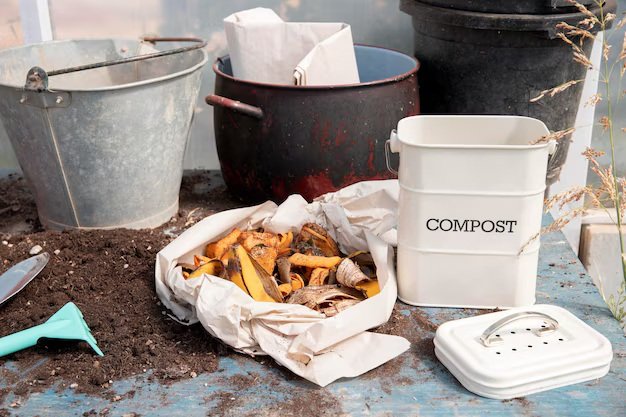What Are The Easiest Fruits and Vegetables to Grow?
If you’ve ever dreamed of growing your own food but felt overwhelmed by the idea, you’re not alone. As someone who once couldn’t keep a succulent alive, I know the struggle is real. But what if I told you that growing your own fruits and vegetables doesn’t have to be complicated—or even require a green thumb?
The truth is, some crops practically grow themselves. They’re resilient, forgiving, and thrive in various conditions with just a bit of care. In this guide, I’ll walk you through the easiest fruits and veggies to grow—even if you’re a complete beginner. I’ll share not just facts but expert advice and research-backed insights to get you started on a successful gardening journey.

In This Article
- What Makes a Plant “Easy”?
- Easiest Vegetables to Grow
- Easiest Fruits to Grow
- Practical Tips for Success
- Conclusion
What Makes a Plant “Easy”?
Before we dive into the list, let’s get clear on what “easy” really means. If you’re a beginner, short on time, or just want a fuss-free harvest, these are the traits you’ll want to look for.
- Low Maintenance: This means plants that don’t need constant babysitting—minimal watering, little to no fertilising, and fewer pest problems. Think of it as the lazy gardener’s dream.
- Fast Growth: It’s encouraging to see results quickly, especially if you’re new to gardening. Fast-growing plants keep you motivated and make it easier to learn what works (and what doesn’t).
- Disease Resistance: Some plants are just built tougher. They naturally resist common problems like powdery mildew or root rot, which means fewer headaches and more harvest.
- Versatility: These plants aren’t picky—they grow well in different soils, containers, raised beds, or directly in the ground. Whether you’ve got a backyard or a sunny balcony, they’re adaptable.
Easiest Vegetables to Grow
1. Radishes

Why They’re So Easy
Radishes are like rocket fuel in your veggie patch—fast, forgiving, and fun. These root vegetables sprout in just 3–7 days and let you harvest crunchy radishes in 3–4 weeks, so it’s satisfying for impatient gardeners. They don’t need much space and perform beautifully in small containers or between other veggies.
Planting Tips
- Timing: Go with cool weather. They’re ideal for spring or fall when days are around 50–65°F (10–18 °C). According to the University of Minnesota Extension, radishes “do best when grown in cooler conditions and are tolerant of cold weather”.
- Soil & spacing: Use loose, well‑drained soil. Dutch guidelines: sow seeds ½ inch deep, spacing 1–3 inches apart. Thin them when seedlings appear so each radish has elbow room.
- Containers: Perfect for pots! UF/IFAS points out they’re “an ideal container garden crop”.
Best Varieties for Beginners
- Cherry Belle – quick and sweet, holds shape well.
- French Breakfast – elongated, adds charm to salads.
- White Icicle – milder flavour and elegant appearance.
Growing Confidence from Experts
The University of Illinois Extension calls radishes “a cool‑season, fast‑maturing, easy‑to‑grow vegetable… even on the smallest city lot”. And Mississippi State’s extension agrees—they’re ready in just four weeks and then rapidly lose quality if left too long.
2. Lettuce

Why It’s So Easy
Lettuce is a top pick for beginner gardeners—its shallow roots make it ideal for pots or raised beds, and it thrives in partial shade. You’ll often see it waving happily on balconies or window sills. Plus, it grows fast and handles cooler temps well, extending your harvest season.
Planting Tips
- Soil & Sun: Use loose, fertile, well-draining soil; lettuce likes full sun or light shade. Best temps are 10–20 °C (50–70 °F) for peak growth.
- Sowing: Direct-seed leaf varieties in early spring or fall. Lightly cover seeds (~1/8–1/4″ deep) and keep the soil moist.
- Harvesting: Snip outer leaves once they’re large enough (usually 4–6 weeks), and the plant will continue producing.
- Bolting Tip: Watch for hot spells—partial shade during warm days can prevent premature bolting.
Quick Stats
| Type | Days to Harvest | Ideal Temp (°C) |
|---|---|---|
| Leaf Lettuce | 30–40 | 10–20 |
| Romaine | 60–80 | 10–18 |
Supporting Study
According to Mississippi State University Extension, many lettuce types mature in 20–60 days and tolerate light frost, making them perfect for cool-season gardening.
3. Green Beans

Why They’re a Breeze
Green beans (also known as snap or string beans) are a classic beginner’s crop. They consistently deliver a high yield—sometimes two harvests from one planting—and they generally don’t invite serious pest issues. Kids love them too, because they grow fast and produce strings of fresh beans that are fun to pick.
Planting Tips
- Direct-sow your seeds after the last frost, when soil temperatures hit at least 55°F. Air temperatures between 65–85°F are perfect; too hot (above 85°F) and flowers may drop.
- For bush beans, plant seeds about 1 inch deep and 6 inches apart, with rows spaced 2–3 feet apart to allow airflow.
- For pole beans, set seeds 3 inches apart at the base of sturdy supports or trellises that reach 6–7 feet.
Variety Snapshot
- Bush beans are compact and low-maintenance—perfect for small plots and kids who love quick results.
- Pole beans need vertical support, but repay the effort with a longer, continuous harvest period.
Quick Care Notes:
- Use well-drained, slightly acidic soil (pH ~6.5) amended with compost. As legumes, beans don’t require heavy fertilisation; however, applying a balanced starter fertiliser at planting can be beneficial.
- Keep the soil consistently moist by watering once or twice a week. Avoid wetting the foliage to prevent mould and disease.
Why Kids Love It:
Pole beans are a bit magical for children—they climb up poles, create shade, and offer the joy of hunting for ripe pods at eye level. Plus, snapping beans to eat fresh is a delightful ritual.
4. Zucchini (Courgette)

Why It’s So Easy
Zucchini is the poster child of easy, prolific gardening. These warm-season squashes thrive in a range of soil types—from sandy loam to modest garden mix—and once they warm up, they produce fruit fast and in abundance. University of Minnesota Extension notes that direct-seeding zucchini once soil temperature hits around 70°F ensures strong germination and skipping the hassle of transplanting. Similarly, Utah State’s Extension highlights zucchini’s reputation for “overwhelming production,” making it a favourite for beginner gardeners.
Planting Tips
- Direct sow after last frost: Once nighttime temps stay above ~50°F and soil hits ~70°F, sow seeds 1–2 inches deep in well-worked soil or raised beds .
- Space it right: Follow guidelines from the Utah and West Virginia Extensions: plant in hills or rows spaced about 3–4 ft apart, and thin to 1–2 strong seedlings per spot.
- Sun + fertility = yield: Zucchini loves full sun (6–10 hrs/day) and organically rich, well-drained soil. Amend beds with compost or balanced fertiliser before planting .
Productivity Snapshot
- Yield: Expect 20–40 lb of zucchini per 10 ft row—often more if harvested steadily.
- Time to harvest: Summer squash like zucchini mature in 50–65 days from sowing.
Pro Tips
- Keep ‘em coming: Harvest young (6–8″ long, ~2″ diameter) regularly to encourage ongoing fruit production.
- Avoid blossom-end rot: This common issue reflects inconsistent watering, affecting calcium uptake. Fix it with steady moisture and polish away any rotting ends .
- Bring pollinators: Zucchini relies on bees. In low-pollinator settings, hand-pollinate blossoms early to prevent small, aborted fruits.
5. Carrots

Why They’re Beginner-Friendly
Carrots are root vegetables that skip transplanting—you sow seed directly and they grow with minimal fuss. They even withstand light frost, giving you flexible planting windows. No seed trays, no replant stress—just sow and wait.
Planting & Soil Needs
- Direct sow only: Do not transplant carrots—doing so disrupts their taproot and leads to forked roots .
- Loose and deep soil: For smooth, straight carrots, loosen the soil at least 8 inches deep. Avoid rocky or heavy clay soils, or grow them in raised beds filled with sandy loam.
- Optimal pH & fertility: Aim for pH 6.0–6.8; onions and carrot flies love the lower end of that range. Avoid excess nitrogen: carrots prefer moderate feeding.
Planting Timeline
- Soil temp matters: Sow when soil warms to ~40°F; germination speeds up in temperatures toward 60–70°F .
- Maturity: Expect 55–80 days to harvest, depending on variety—Danvers or Nantes types typically take around 60–70 days.
- Succession sowing: Repeat planting every few weeks to prolong harvest, even into autumn or early winter, with mulch.
Care and Nutrition
- Water deeply and consistently: Aim for ~1″ of water weekly; uneven moisture creates tough or bitter roots .
- Thin seedlings early: Once seedlings are ~1″ tall, thin to ~2–3″ apart so taproots have room to develop.
- Mulch for moisture and weed control: A straw or grass-clipping mulch keeps soil cooler and roots sweeter .
Best Varieties & Fun Facts
- Workhorse varieties: Nantes and Danvers are reliable for home gardens, combining sweetness and good form .
- Cute short types: Chantenay or globe carrots dip into heavy or raised bed soil nicely, plus they’re a great size for kids’ hands.
- Nutrition bonus: These orange roots provide rich beta-carotene (vitamin A precursor) along with vitamin K and potassium.
Easiest Fruits to Grow
1. Strawberries

Why They’re a Great Pick
Strawberries are practically made for beginner gardeners. You can grow them in containers, hanging baskets, or straight in the ground. They’re low-maintenance, with very few pest issues, and a single plant can send out runners to expand your patch, which means one plant can turn into many over time.
Planting & Care Tips
- Choose the right type:
- June-bearers give you one big harvest in early summer.
- Everbearers or day-neutrals yield smaller, but repeated, harvests throughout the season.
- Feeding & soil: Plant in well-drained soil with plenty of organic matter. Aim for a slightly acidic pH, around 5.5–6.5. A bit of nitrogen at the start of each season helps fuel growth.
- Watering: Keep the soil evenly moist—about 1 inch of water each week. Drip irrigation works best to avoid fruit rot.
How Much Fruit to Expect
Don’t just take my word for it—Michigan State University Extension notes home gardeners often harvest up to two pounds of strawberries per square foot in a single season. That’s a hearty haul for minimal effort!
Best Varieties for You
Look for these tried-and-true types:
- June-bearers: Guardian, Red Chief
- Everbearers/day-neutrals: Albion, Tristar, Tribute
These are praised for flavour, consistent yields, and disease resistance—everything you want as a beginner.
2. Tomatoes

Why They’re Easy—and Rewarding
Tomatoes thrive in both containers and garden beds, don’t demand a lot of fertiliser, and almost always taste better homegrown than store-bought. They’re perfect for a taste-of-success project.
Growing Made Simple
- Start indoors: About 6–8 weeks before the last frost, sow seeds indoors, and then transfer them after frost danger has passed.
- Pick the right type:
- Cherry tomatoes like ‘Sweet 100’ are prolific and forgiving.
- Patio varieties stay compact and work great in containers.
- Care basics:
- Use rich soil and good drainage.
- Stake or cage to support growth.
- Water regularly—tomatoes dislike being left dry and then suddenly drenched
- Why they’re forgiving: They’ll put out fruit even if you skip a feeding or two. Plus, there are tons of disease-resistant varieties.
Expert Wisdom
Gardening pro Joe Lamp’l, who’s worked with tomato guru Craig LeHoullier, says practice over perfection:
“Don’t get hung up on the destination, but learn to love the journey.”
Tomatoes teach patience—but they reward generously with fresh flavour.
What Yields to Expect
The same MSU Extension bulletin that tracks vegetable production in Michigan estimates average fresh-market tomato harvests around 15 tons per acre, with top growers reaching up to 20 tons. For home gardeners, that translates to dozens of juicy tomatoes per plant across the season.
Varieties Perfect for Beginners
- Cherry types: Sweet 100, Sungold
- Patio/compact: Bush Early Girl, Patio Princess
- Disease-resistant options like Better Boy or Celebrity help avoid common garden disappointments.
3. Raspberries

Why They’re So Easy to Grow
Raspberries are a gardener’s delight—plant once and enjoy for years. They’re perennial, meaning you don’t have to replant each season, and they’re surprisingly hardy. Once established, they’re fairly drought-resistant and will keep producing annually, with each cane fruiting once in its second year. Plus, a well-managed raspberry patch can yield several hundred berries each season.
Growing Tips You’ll Love
- Sun & Soil: These plants thrive in full sun (about eight hours daily). They’ll tolerate sandy loam to clay soils, as long as drainage is good. If your garden is on the heavy side (clay-rich), consider building raised beds or adding organic matter—like compost—to improve structure and airflow.
- Pruning Strategy: Each cane produces fruit in year two, then dies off. Prune dead canes close to the ground each late winter for better growth next spring. This keeps productivity high and disease down.
- Containment: Raspberries love to spread, which is great—but sometimes too great! Contain them in a designated bed or row to keep things tidy and manageable.
4. Figs

Why They’re Nice & Simple
Figs are low-maintenance food forests in miniature. They’re self-pollinating (no need for bees or wasps), drought tolerant once established, and happy in containers, making them accessible even in small spaces or colder climates. They don’t demand fancy soil—just well-drained conditions, and they’ll reward you richly with sweet, homegrown fruit.
Container Magic
- Use a pot at least 15 gallons (or 18″ in diameter)—this gives roots room to roam. Fabric pots are great, as they help roots prune themselves.
- A mix of compost and quality potting soil works best—lightweight but well-nourishing.
- Keep containers on wheeled bases. That way, you can wheel them into shelter come winter or shift them out of a heatwave—flexibility is key.
Smart Care Tips
- Provide full sun—at least six hours daily, ideally more.
- Water regularly during drought, but allow the top portion of the soil to dry out before rewatering; keep it moist but not soggy.
- Fertilise moderately—lean soils are actually best. A slow-release NPK in spring is usually enough. Too much fertiliser pushes leafy growth over fruit.
- Popular container-friendly varieties include ‘Celeste’ and ‘Little Miss Figgy’—the latter being a dwarf that thrives in small patios or gardens.
Pruning & Overwintering
- Prune in dormancy to shape and refresh the plant. Remove suckers and crossing branches. That keeps fruit reachable and the structure clean.
- In cooler climates (Zone 7 or lower), insulate pots with mulch or blankets and wheel them into protected spaces when frost hits.
A Local Success Note
Gardening enthusiasts in Maryland report fig plants flourishing even in pots, producing fruit in just a couple of years. Once cooled for winter, they’ve been successfully moved indoors, then brought out again in spring. Similarly, eight common fig varieties in warm regions benefit from container use for winter protection.
5. Blueberries

Why They’re Easy
Growing blueberries is surprisingly straightforward—once you get the soil right. These shrubs resist many common pests and adapt well to containers. With their striking spring blossoms and summer fruit, they’re a joy for beginners and veteran gardeners alike.
Soil & Container Tips
Blueberries thrive when their roots are in acidic, well-drained soil with a pH ideally between 4.5 and 5.5. If your garden soil isn’t that acidic, container growing is a great solution—you can tailor the mix precisely. University of Maryland Extension suggests a 50/50 mix of good potting soil and peat moss; fill containers, water thoroughly, then plant your blueberry.
Oregon State University notes that beyond pH, drainage and organic matter matter too. Raised beds or pots with peat, pine bark, or perlite work best. And when growing in containers, keep the containers on raised surfaces like bricks to ensure good drainage.
Planting & Pollination
For best yields, plant at least two different varieties that bloom around the same time—this helps pollinators do their job. If you’re growing one variety, pick a self-fertile type, though it won’t produce as much fruit.
Young bushes focus on roots, not fruit. Don’t be surprised if they don’t yield in the first 1–3 years. Gardeners commonly remove early blossoms so energy goes into root development.
Care & Maintenance
- Watering: These are shallow-rooted plants that hate drought. Aim for about 1 inch of water per week—keep it consistent.
- Mulching: A 2–3 inch layer of organic mulch helps maintain moisture and suppress weeds.
- Fertilising: Use acid-loving plant fertiliser—avoid nitrate- or chloride-heavy mixes
- Sunlight: Full sun is key; afternoon shade helps in very hot climates
- Protecting Fruit: Birds love ripe berries—cover with netting or floating row covers when ripening begins.
Yield & Timeline
While you may not get berries in the first year, full production often arrives by year 5. In favourable conditions, a healthy, mature rabbiteye blueberry bush can produce up to 15 pounds of fruit per season. You’ll also love the change of seasons: delicate spring flowers followed by summer’s sweet bounty.
Practical Tips for Success
- Start Small: Don’t try to grow everything at once. Pick 2–3 crops and learn as you go.
- Use Good Soil: Whether it’s compost or organic potting mix, healthy soil = healthy plants.
- Water Consistently: Most crops prefer deep watering 1–2 times a week rather than daily sprinkling.
- Mind the Sun: Most fruiting crops need 6–8 hours of sunlight daily. Leafy greens can handle less.
- Observe and Learn: Keep a garden journal. Note what worked, what didn’t, and when you planted.
Learn More: What Is a Vegetable Marrow?
Conclusion
You don’t need acres of land or decades of experience to grow your own food. Just curiosity, patience, and a willingness to get your hands a little dirty. Whether you’re planting radishes in an ice cream tub or harvesting strawberries from a wheelbarrow, each step connects you to something deeper—nature, nourishment, and self-reliance.
So pick up a packet of seeds. Your garden adventure starts now—and it’s going to be easier than you think.







